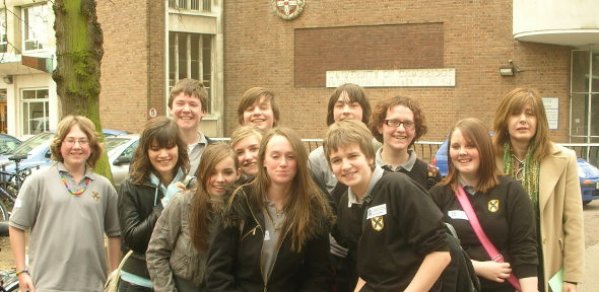
The Department of Engineering hosted a pilot secondary education programme aimed at stimulating informed change to consumption practices through Ecological Footprinting.
There is in here the potential for a national scheme to be developed to change the attitudes in schools in a reasonably scientific and analytical way.
Professor Peter Guthrie
Footprinting is a tool for estimating the land area required to sustain a population's life-style. It tackles a central sustainability question: just how much of the earth's bio-productive capacity do humans use? Answer for a UK citizen: 314% of their fair share. Footprinting can reveal the components of our life-style that have the biggest ecological impacts. This data is the stuff of informed change: how far could recycling and other initiatives take us, what would it really take for us to achieve 'One-Planet Living'?
The potential for footprinting to stimulate learning and change is being researched by Chris Cleaver as his fourth year project. Chris an undergraduate who is supervised by Peter Guthrie, engaged a group of 14-15 year old students from Harry Carlton Comprehensive School in collecting data to estimate and interpret their own school's Ecological Footprint. After an intensive eight weeks of surveying, sampling and processing the student group came to the Department to present their findings to a four-person panel, which was chaired by Philip Guildford, Director of Research, and included Professor Peter Guthrie, Dr. Joy Warde, from the Department, and Dr. Kate Billings, Faculty of Education.
Participating in the footprinting process
The Harry Carlton year 10 students had split into three groups, each collecting primary data for a different broad category of consumption. Faced with the task of estimating components of the school's food consumption, a group member described their approach, "we decided the best way of doing this was to design a questionnaire to discover how much pupils would eat in a school day…we first created a questionnaire and tested it, gave it out, then used Microsoft Excel to process the data". Despite testing, not all the problems were ironed out, "we weren't specific enough about how to answer some of the questions, we'd be asking how much fruit juice do you consume a week, and they'd write 3 down or something!"
Revealing results for the school's governors
Each group's results were then combined, and the total school footprint was estimated at 0.8 global hectares per pupil. This is 45% of a pupil's fair earth-share, to sustain an activity taking less than 20% of their time. The students showed that the life-style areas contributing the most were 'Shelter', including the school's electricity and gas usage, and 'Mobility', covering car and bus transport to and from school (both 35%). Meanwhile, paper and meat consumption were singled out as the big-hitters for 'Goods' and 'Food' life-style areas respectively.
For each area, the student footprinters had identified in their presentation simple actions that could lead to significant reductions in ecological footprint. Will these actions materialise? The lead-presenter thought so: 'we're going to continue the project, and we're going to deliver the results to the school governors…we must educate staff, students on all these issues and how they can reduce our ecological footprint'.
Joy Warde's words of commendation are telling of how the panel viewed the presentation: "I'm really impressed, you've done a really good job of doing the presentation with confidence; it's nice to see'.
Group-engagement in Footprinting: A strong concept
When the students and panel later sat down to reflect on the programme, one thing rang clear: the concept of participative footprinting was a good one. As one student put it, "probably the best way to learn it is to actually do it yourself; it helped a lot to find out exactly how you can cut down all these things, not just individually but as a group of people as well". Perhaps there was a wider lesson here about the value of engaging groups in change, something Philip Guildford acknowledged to Harry Carlton's footprinters, "personally, I found it quite inspirational, because I'm helping with changes on this site".
Can the programme go further and wider? Peter Guthrie has little doubt: "there is in here the potential for a national scheme to be developed to change the attitudes in schools in a reasonably scientific and analytical way". Those optimistic words seem a fitting response to the day the young footprinters held centre-stage in the Department of Engineering.
About the Author
Christopher Cleaver, a fourth-year engineering student, conceived, designed and helped to implement the school footprinting programme. After graduating, he intends to develop the concept further, and is pondering over models of dissemination. Chris did some eco footprinting last year with schools in Mauritius and this is an extension of that work. He is supervised by Professor Peter Guthrie, Head of the Centre for Sustainable Development.

